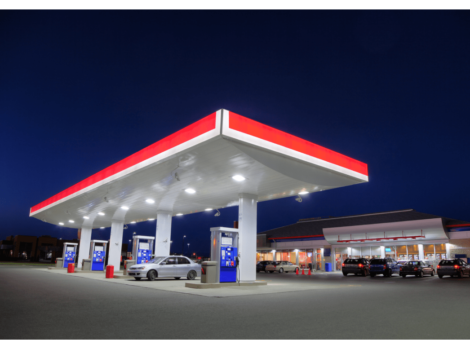
Calculating the impact of a fuel volume increase on overall profit
Discover how Kalibrate used its data and analytics capabilities to empower a major US fuel retailer to make confident decisions to increase revenue.

Client question:
What impact would increasing volumes by 8%, or 5,000 gallons per site per week, have on profit?
A large fuel retailer spanning multiple states in the US came to us with an ambitious goal and asked us to quantify the impact that such a big increase in volume would have on their overall site profitability.
The Kalibrate approach
Kalibrate identified several questions that needed careful consideration in order to address this challenge:
- What is the optimal unit increase that should be targeted at each site?
- What level of price decreases will the market allow the client to implement given their current price position, i.e. Will a significant volume increase be sustainable in the market?
- What is the impact on store sales?
Utilizing existing site location, fuel price, and sales performance data, Kalibrate embarked on an analysis that would help to remove the risk from strategic changes and empower the client to make better decisions and propel business growth.
The insight
The analysis was split into five sections — each providing specific and actionable insight to the client
- Analyze individual site-level sensitivities to understand the opportunity for volume growth
- Analyze individual site-level margin and price position vs. competitors (Delta to Competition / DTC)
- Calculate the fuel-store relationship to understand the impact of incremental volume changes on store sales
- Simulate an 8% volume increase per site to establish the impact on fuel margin, DTC, and store sales
- Identify the optimal volume increase by site to maximize the potential for higher overall profit
The action
Every site in the network was analyzed and segmented into four actionable areas.
- Fuel-driven sites – where fuel price could be increased without significantly impacting store sales
- Store-focused sites — where increasing fuel volumes could positively impact store sales
- Opportunity sites — where a lower fuel price could increase overall sales revenues
- Review sites — where a new strategy should be considered
What impact would increasing volumes by 8%, or 5,000 gallons, per site per week have on profit?
The client was presented with all the data analysis and insight and a clear answer to their original question.
If fuel price decreases were applied equally by site, it would result in a profit loss of -$275 per site per week.
But a different approach would increase profit by $586 per site per week.
The analysis showed that applying an overall price decrease, that was required to gain additional fuel volume, equally — across all sites would not generate enough in-store sales to cover the fuel margin deficit. So, the client was presented with additional projected scenarios, including:
- Matching the lowest fuel-priced competitor on fuel volume, store sales, and overall profitability − which would result in a total profit loss of -$744 per site per week.
- Targeting volume increases by implementing optimal price decreases by site − which would result in a total profit loss of -$275 per site per week.
- Targeting optimal volume changes by implementing both increases and decreases in fuel price for different sites − which would result in a total profit increase of $586 per site per week – delivering the client an annual increase of over $1.5M.


